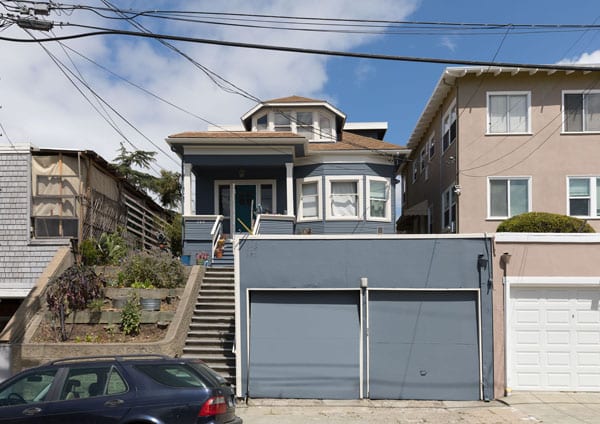
Sometimes it takes a life-altering event like the Covid-19 pandemic to leave us reevaluating just about everything, including where we live – and with whom we live. We’ve all been experiencing an unprecedented time in which a word like “pivot” has been used on a daily basis, where eviction moratoriums have gone on for extended periods of time (and then have been extended again), and where cities even like San Francisco have seen decreases in rent. We may be seeing light at the end of the Yerba Buena Tunnel; still, the past several years may leave landlords and homeowners who are considering building an Oakland ADU or a San Francisco ADU wondering if it’s worth it.
It Is, As Long As You Know and Follow the Rules.
There are three areas of law that homeowners with Bay Area ADUs, potential landlords and real estate investors need to be familiar with, the first being rent control.
1.) Rent Control
How much a landlord is allowed to raise rent for a tenant is usually dependent on whether or not the local jurisdiction in which the rental unit is located has rent control. If so, the local ordinances determine guidelines for rent increases. A State law called The Costa-Hawkins Rental Housing Act was passed in 1995, and it prohibits rent control on new construction, plus it exempts single-family homes and condos from rent control. It also allows for vacancy decontrol, which means that when the tenant moves out, the landlord can set the new base rent at market value. In 2020, the State passed statewide rent control AB1482 (amends Costa-Hawkins) which limits rent increases to regional CPI plus 5% with a max of 10% annually for rental properties not covered by a local rent control ordinance. The state rent control law also exempts single-family homes (provided that the landlord claims the exemption in writing) and new construction for 10 years on all properties. Thus, it is possible to have a new ADU be exempt from local rent control, but then be controlled by the state law after 10 years.
A caveat exists, however, for single-family homes – which meet the legal definition as being separately alienable (i.e. one house on one lot) to be exempt from local and state rent control under Costa-Hawkins/AB1482. If the single-family home also has an accessory dwelling unit (or ADU) and the primary home is not owner-occupied, it loses its Costa-Hawkin (rent control) exemption and the primary dwelling is either subject to local or state rent control based on the date of construction for the primary dwelling.
The bottom line: if an owner is living in the primary dwelling on a lot and builds an ADU on his or property, that ADU is exempt from rent control at least for 10 years. In short, it’s complicated.
2.) Just Cause For Eviction
Just Cause limits a landlord’s ability to evict based only on limited reasons, there being 14 Just Cause reasons in San Francisco and 11 in Oakland. Typically, the laws governing Just Cause follow rent control ordinances. Eviction in any manner beyond what is allowed in these ordinances is considered “wrongful eviction,” and subject to injunctive relief (stopping an eviction in progress), treble damages (three times the cost of the damage), and attorney’s fees involved. Usually, the damages are measured in rent differential (i.e. the rent controlled rent versus market value rent, multiplied by the number of years the tenant is planning to live in the unit). Just Cause in San Francisco covers all units, while in Oakland, Just Cause covers only units built before 1996. There is, however, a November ballot measure in which new construction in Oakland is only exempt from Just Cause for 10 years from completion of the new unit (including Oakland ADUs).
Although nuisance is one of the Just Cause reasons for an eviction, it is difficult for a landlord to prove, and 90+ percent of evictions are due to non-payment of rent. It is also important to note that landlord insurance policies typically cover actual damages – not treble damages or attorney’s fees.
3.) Tenant Protection Ordinances
Tenant Protection Ordinances set the definitions of areas that are considered to be harassment. They also allow for treble damages and attorney’s fees for violations, which usually cover all units.
The Advantages Of Bay Area ADUs Far Outweigh the Disadvantages.

In terms of optimizing your property, the best way to look at any issues that might possibly arise around rent control and Just Cause for Eviction is to look at the potential of your longer-term investment and the value you’ll be creating through the generation of passive income. As well, the resale value of your property should increase with the addition of an Oakland ADU or San Francisco ADU, often substantially.
ADUs also play an important part in the solution to create more affordable housing in our Bay Area communities, which has reached a critical stage.
Our Commitment To Affordable Housing – and To You.

At Adapt Dwellings, we believe that while the Bay Area’s current housing shortages will not be solved by ADUs alone, they offer one of the more immediately available ways to increase the supply of safe and decent housing. We are committed to affordable housing in the Bay Area, and we believe that ADUs – when done right – are an important part of the solution.
If you’re considering the addition of an ADU on your property – or if you have questions about your existing Oakland or San Francisco ADU – Adapt Dwellings is the leader in the Bay Area. When you partner with us, you don’t just get ADU specialists; you also benefit from our expertise in local real estate and property management. We have a unique ability to help our clients navigate a full range of potential issues, such as San Francisco’s and Oakland’s stringent tenant protections, including rent and eviction controls. Our team is here to help!
